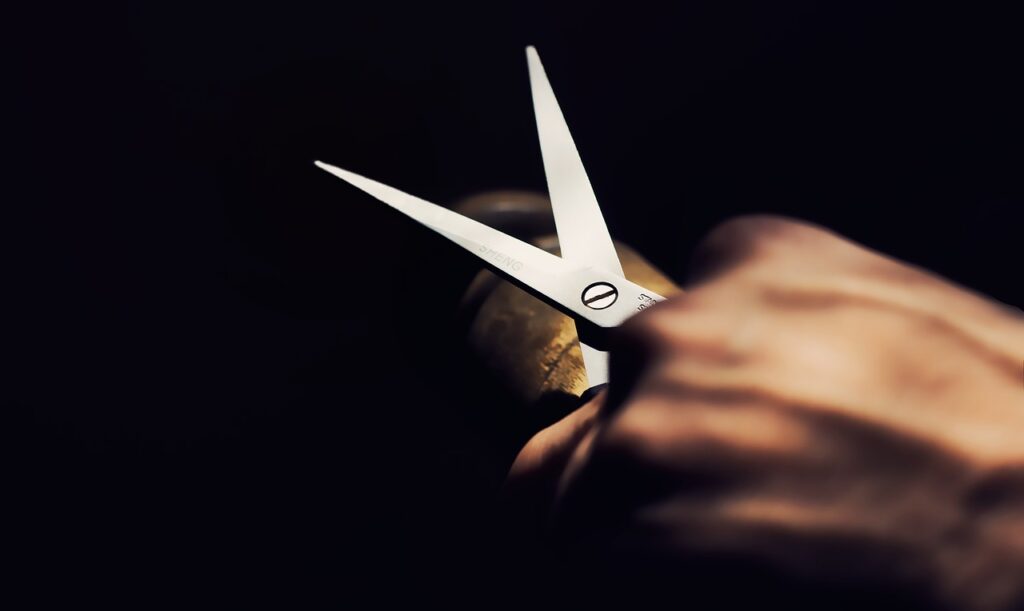The Origin Of Hair Cutting Scissors
The origin of hair cutting scissors dates back thousands of years, reflecting the ancient practice of hair grooming and styling across different cultures.
Ancient Egyptian and Mesopotamian cultures are among the earliest known users of scissors for grooming. They crafted scissors from bronze and later iron, creating rudimentary designs that resembled today’s shears. These early scissors were often used by barbers to trim hair and beards, showcasing their importance in personal grooming even in ancient times.
In China, during the Tang Dynasty (618-907 AD), scissors were refined further with the introduction of forged steel blades. This innovation improved the sharpness and durability of the scissors, making them more effective for hair cutting. Chinese scissorsmiths were renowned for their craftsmanship, producing scissors that were exported and highly valued in other parts of Asia.
In Europe, scissors evolved alongside advancements in metallurgy and craftsmanship during the Middle Ages. They became indispensable tools for barbers and hairstylists, particularly as hairstyles became more elaborate and required precise cutting techniques. The development of scissors in Europe paralleled the growth of the barbering profession, where skilled artisans honed their craft in shaping hair and maintaining facial hair styles.
Throughout history, the design and functionality of hair scissors have continued to evolve with the changing demands of fashion and technology.
Today, the evolution of hair scissors stands as a testament to the ingenuity and craftsmanship of cultures worldwide, highlighting their enduring significance in the art and science of hairstyling.
The First Hair Scissors
The first scissors made for hairdressers were basic but sharp tools meant for cutting hair. They started being used in the Middle Ages by barbers and hairdressers.
Back then, skilled craftsmen handcrafted scissors, carefully forging their blades. These scissors were usually made of steel and had a simple design with short handles that were easy to hold.
During that time, advanced cutting techniques like we have today weren’t needed. People mainly used these scissors for simple haircuts and trimming beards, so they just needed to be sharp and effective.
The Evolution Of Hair Scissors
Over time, how scissors are made has changed to meet the needs of hairdressers who want better tools. Craftsmen started using advanced methods to make scissors, like better blacksmithing. This made it possible to make blades that are thinner and sharper.
Scissors today are made with more precise ways to sharpen them and better materials, like stainless steel. This is when hairdressing scissors became the ones you see today.
Improvements in how scissors are made also let them be customized in different sizes, shapes, and colors. This lets hairdressers pick scissors that match what they like.
These changes also helped hairdressers be more creative and do more with hair.
Scissors For Hairdressers: Innovations In The Design
There are several designs of hair cutting scissors available for hairdressers, each tailored to specific cutting techniques and stylist preferences. Some common designs include:
1. Straight Scissors: These are the most traditional type with straight blades and a simple handle design.
2. Offset Scissors: These have an ergonomic handle design where the thumb handle is shorter than the finger handle, reducing strain on the wrist.
3. Swivel Thumb Scissors: These feature a swiveling thumb ring that allows for more flexibility and comfort during cutting.
4. Thinning Scissors: Also known as texturizing scissors, these have teeth on one or both blades to remove bulk and create texture in hair.
5. Convex Blade Scissors: These have curved blades which allow for smooth, precise cutting and are often used for advanced cutting techniques.
6. Left-Handed Scissors: Designed specifically for left-handed stylists, with blades and handles reversed to accommodate their dominant hand.
7. Japanese Scissors: Known for their high-quality steel and craftsmanship, these scissors are favored for their sharpness and durability.
8. Multi-Functional Scissors: These combine different cutting features in one tool, such as straight cutting blades with teeth on one side for thinning.
Each design serves a different purpose and allows hairdressers to perform various cutting techniques with precision and comfort, catering to their individual styling needs and preferences.
Haircutting Scissors: Different Materials
Modern and professional hair cutting scissors are typically made from high-quality materials chosen for their durability, sharpness, and resistance to corrosion. Some common materials used include:
1. Stainless Steel: This is the most common material for hair cutting scissors due to its durability, resistance to rust, and ease of maintenance.
2. Cobalt Steel: Known for its hardness and edge retention, cobalt steel is often used in high-end professional scissors for superior cutting performance.
3. Titanium: Scissors with titanium-coated blades offer increased durability and resistance to corrosion, ideal for frequent use in humid environments.
4. Japanese Steel: Scissors made from Japanese steel are renowned for their exceptional sharpness and edge retention, making them popular among professional stylists.
5. Damascus Steel: This is a type of steel known for its distinctive pattern and strength, used in premium scissors for both aesthetics and cutting performance.
6. Carbon Steel: Although less common in modern scissors, carbon steel provides excellent sharpness and is preferred by some stylists for its cutting precision.
The choice of material depends on the desired characteristics such as sharpness, durability, and comfort during use. Professional stylists often select scissors based on their specific cutting techniques and personal preferences for balance and handling.
Hair cutting Scissors: Top Brands
Some of the best haircutting scissors for hairdressers and salons are produced in Japan (brands like Mizutani, Kasho, Joewell), Germany (Jaguar, Tondeo, Dovo), Italy (Yasaka, Ermila), South Korea (Kamisori, Hikari), and the United States (Shark Fin, Fromm Beauty). These countries are known for their craftsmanship, offering scissors renowned for precision, durability, and ergonomic design.



